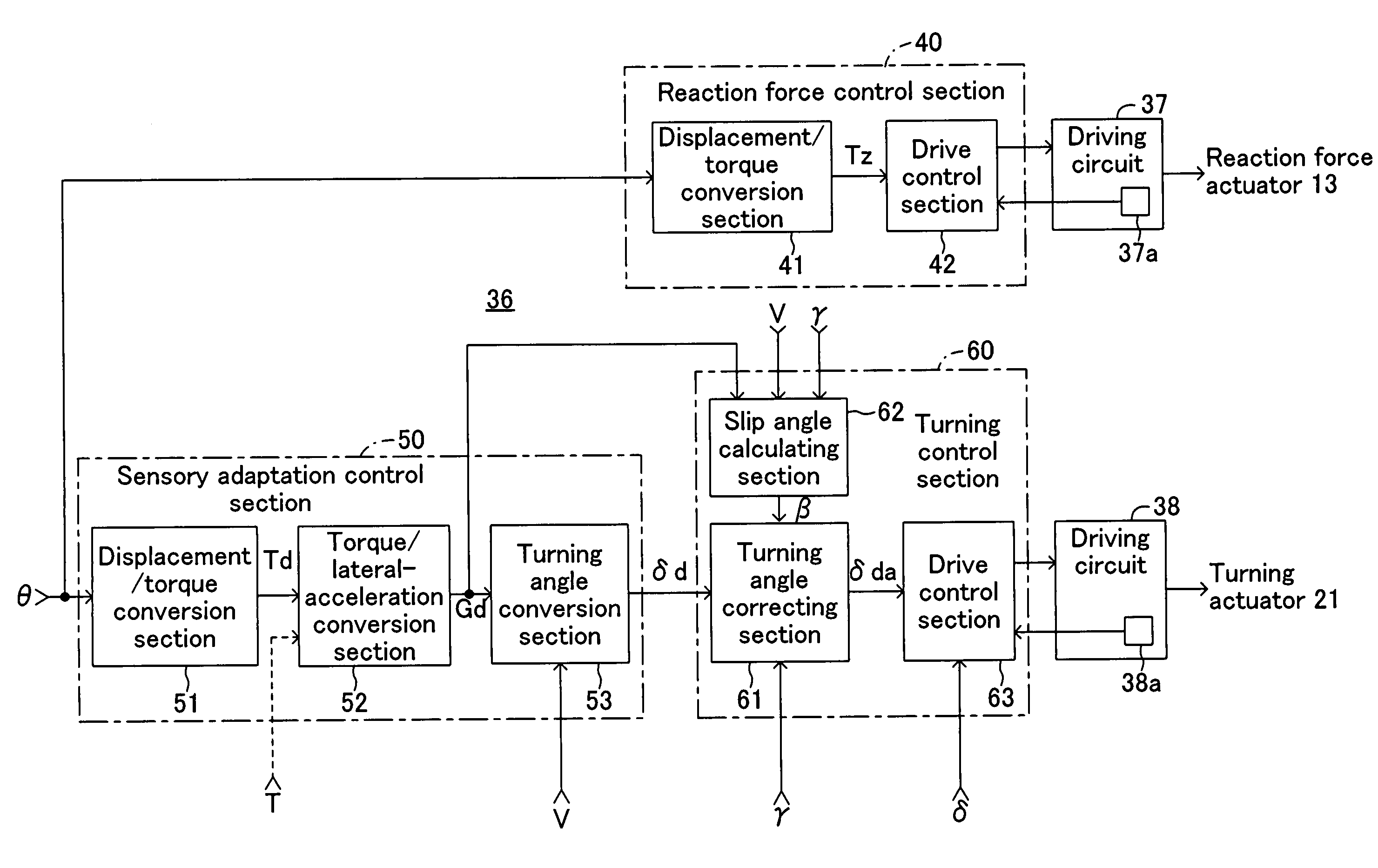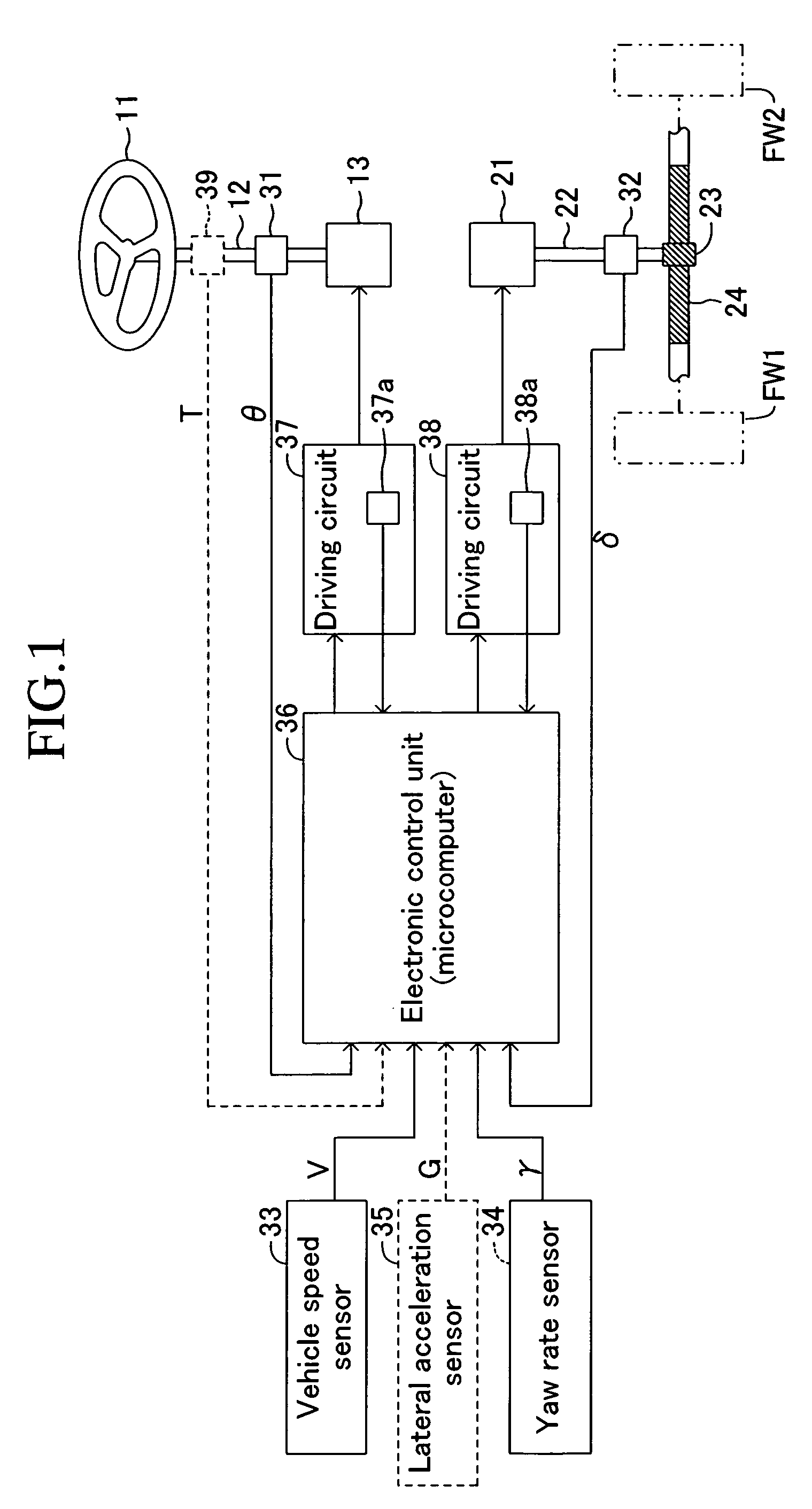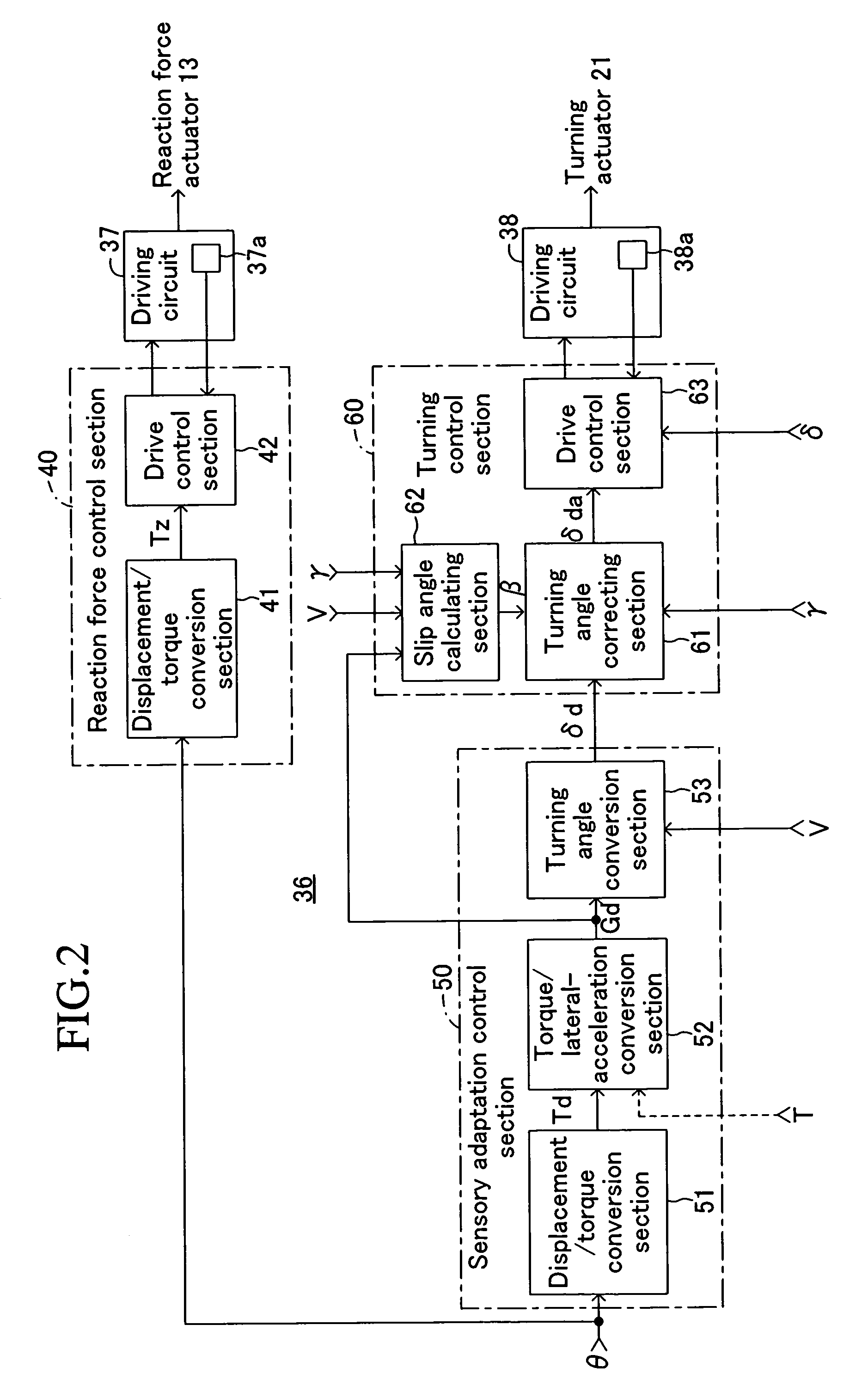Vehicle steering apparatus
a steering apparatus and vehicle technology, applied in the direction of steering initiation, vessel construction, instruments, etc., can solve the problems of difficult for the driver to drive the vehicle, incongruity of the driver, so as to and facilitate the driving of the vehicle
- Summary
- Abstract
- Description
- Claims
- Application Information
AI Technical Summary
Benefits of technology
Problems solved by technology
Method used
Image
Examples
first embodiment
[0030]A vehicle steering apparatus according to a first embodiment of the present invention will be explained hereinafter with reference to the drawings. FIG. 1 is a block diagram schematically showing the vehicle steering apparatus according to the first embodiment.
[0031]This steering apparatus is provided with a steering handle 11 as an operating section that is turned by a driver for steering left and right front wheels FW1 and FW2, those of which are steered wheels. The steering handle 11 is fixed to the upper end of a steering input shaft 12. The lower end of the steering input shaft 12 is connected to a reaction force actuator 13 composed of an electric motor and deceleration mechanism. The reaction force actuator 13 exerts reaction force on the turning operation of the steering handle 11 by a driver.
[0032]This steering apparatus is further provided with a turning actuator 21 composed of an electric motor and a deceleration mechanism. The turning force by the turning actuator ...
second embodiment
[0076]Subsequently, a second embodiment of the present invention will be explained wherein a yaw rate is used instead of the lateral acceleration as a motion state quantity in the first embodiment. This second embodiment is also provided with a lateral acceleration sensor 35 detecting an actual lateral acceleration G which is a motion state quantity that the driver can perceive, in addition to the yaw rate sensor 34 in the first embodiment. The other configurations are same as those in the first embodiment, but the computer program executed by the electronic control unit 36 is different from the first embodiment.
[0077]The computer program executed in the electronic control unit 36 in the second embodiment is shown in FIG. 6 by a functional block diagram. In this case, the displacement / torque conversion section 51 functions in the same manner as the first embodiment, but a torque / yaw-rate conversion section 54 is provided instead of the torque / lateral-acceleration conversion section ...
PUM
 Login to View More
Login to View More Abstract
Description
Claims
Application Information
 Login to View More
Login to View More - R&D
- Intellectual Property
- Life Sciences
- Materials
- Tech Scout
- Unparalleled Data Quality
- Higher Quality Content
- 60% Fewer Hallucinations
Browse by: Latest US Patents, China's latest patents, Technical Efficacy Thesaurus, Application Domain, Technology Topic, Popular Technical Reports.
© 2025 PatSnap. All rights reserved.Legal|Privacy policy|Modern Slavery Act Transparency Statement|Sitemap|About US| Contact US: help@patsnap.com



